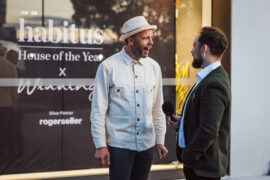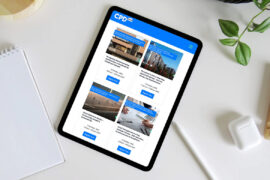The Internet of Things (IoT) is changing our indoor environments for the better – but what are the challenges, similarities and differences between the needs of a smart home and that of a smart building?

August 31st, 2020
A lot of discussion is happening regarding the transformative values of the Internet of Things (IoT) in home and building automation. The growing need for low-cost sensors and wireless technologies is prevalent and is changing the indoor environment (where you work and live) for the better.
Both smart building and smart home automation; they have several things in common which include climate control, lighting automation and security and fire safety. Even though there are a few things in common, both of them require different communications infrastructure to make it work. Few things that set them apart from each other are:
Here the physical environment plays a significant role due to its impact on the quality of the wireless radio link. When talking about small-scale home entertainment that comes with simple structures and fewer obstacles present minimal challenges that lead to short-range technologies. Let’s say you have wi-fi connection issues in some parts of your house, and it can be easily rectified by just one extender.
But on the other hand, when it comes to commercial buildings that are present in widely spread campuses or structurally dense industrial facilities, here, short-range solutions will not help the cause due to the area coverage.
To begin with, in-home automation low power wireless connectivity is an add on, not a necessary requirement. Why do you wonder? Well, that’s because most devices are conveniently placed near the power outlets, but there are only a handful of endpoints. So technically, yes, you can connect all of your smart home devices to the internet using your current wireless network- without thinking about its power-hungry nature.
Now, on the other hand, for commercial and industrial facilities, they are not placed anywhere near the power supply, and even if they are, wiring that many sensors are too expensive and not manageable.
One of the many challenges faced by the wireless communication systems that function in the license-free spectrum is an in-band ratio. It is globally present, especially the 2.4 GHz frequency band – it is widely accepted amongst the existing radio technologies which include Bluetooth, wi-fi, Zigbee among others.
The bandwidth issue at a home network might seem less crucial, given the small number of connected devices. On the contrary, for industrial IoT buildings, the risk regarding electromagnetic interference is significant.
We would like to conclude by saying that despite their similarities in certain situations, the smart home and building architecture consists of different technical, network connectivity, and engineering requirements. When talking about smart buildings, the challenges you might face in network range, power and scalability mean that industries need to look beyond established short-range and mesh solutions in the market. In the end, what you opt for regarding the connectivity choice can make or break your IoT structure.
INDESIGN is on instagram
Follow @indesignlive
A searchable and comprehensive guide for specifying leading products and their suppliers
Keep up to date with the latest and greatest from our industry BFF's!

Welcomed to the Australian design scene in 2024, Kokuyo is set to redefine collaboration, bringing its unique blend of colour and function to individuals and corporations, designed to be used Any Way!

London-based design duo Raw Edges have joined forces with Established & Sons and Tongue & Groove to introduce Wall to Wall – a hand-stained, “living collection” that transforms parquet flooring into a canvas of colour, pattern, and possibility.

Schneider Electric’s new range are making bulky outlets a thing of the past with the new UNICA X collection.

In this comment piece by Lin (Leo) Meng, computational design lead at HDR, we hear about the interface of data and design.
The internet never sleeps! Here's the stuff you might have missed

McIldowie Partners, in association with Joost Bakker, has been awarded The Learning Space at the INDE.Awards 2025. Their project, Woodleigh Regenerative Futures Studio, redefines the educational environment as a living ecosystem that nurtures sustainability, innovation, and community.

Phillip Withers joins the podcast to discuss landscape design in relation to Country, place and European notions of control, as well as his part on the Habitus House of the Year 2025 Jury.

In a landscape clouded by data and greenwash, Product Aware offers architects and designers a common language for sustainability. Embraced by suppliers – including Milliken – it is setting a new benchmark for trust and bringing clarity and accountability to material specification.

CPD Live’s final live-presented season for 2025 continues with a powerful Day 2 lineup, delving into façade weatherproofing, apartment design trends, smart bathrooms, and digital compliance. Starting from 9 AM AEDT, these free CPD-accredited sessions will help you finish the year with fresh insight and full compliance confidence.